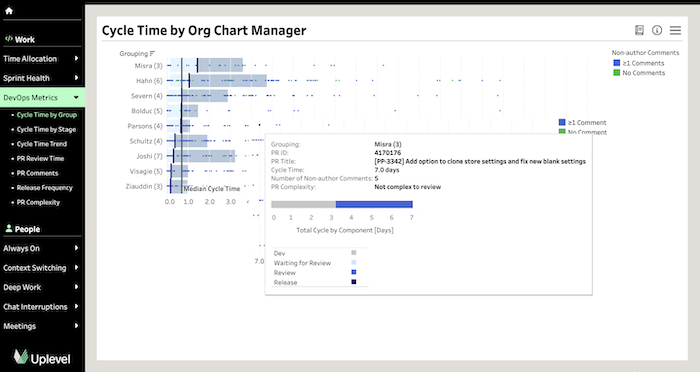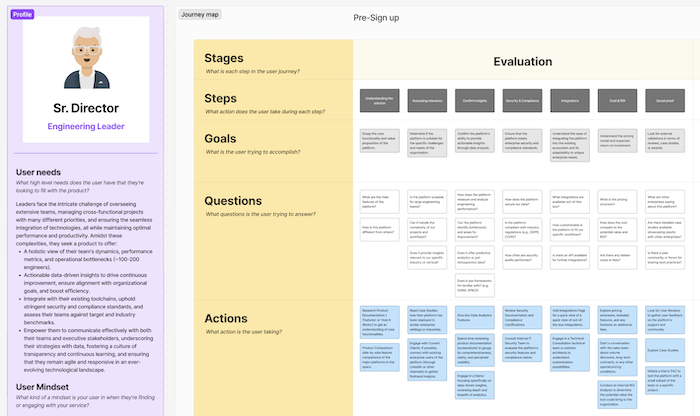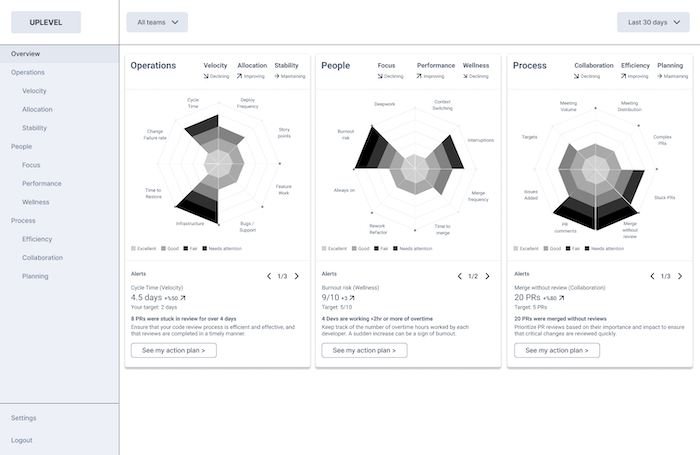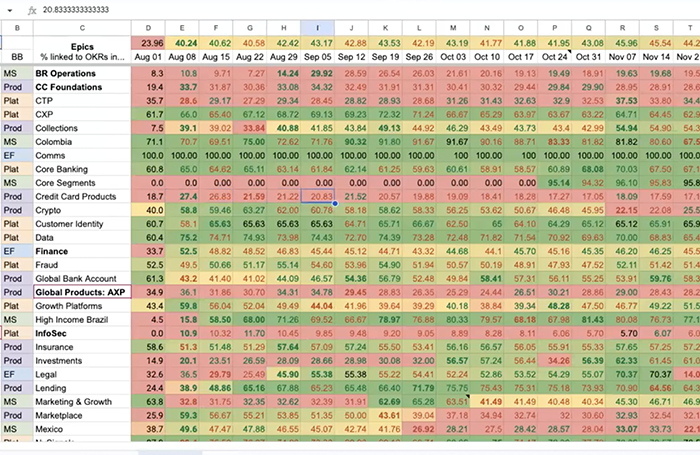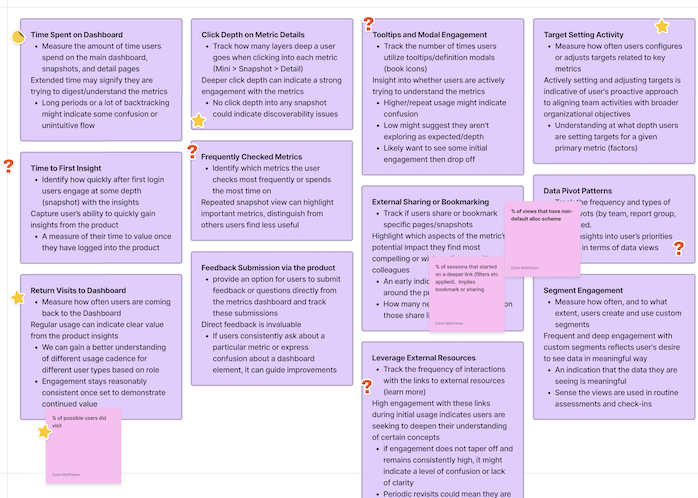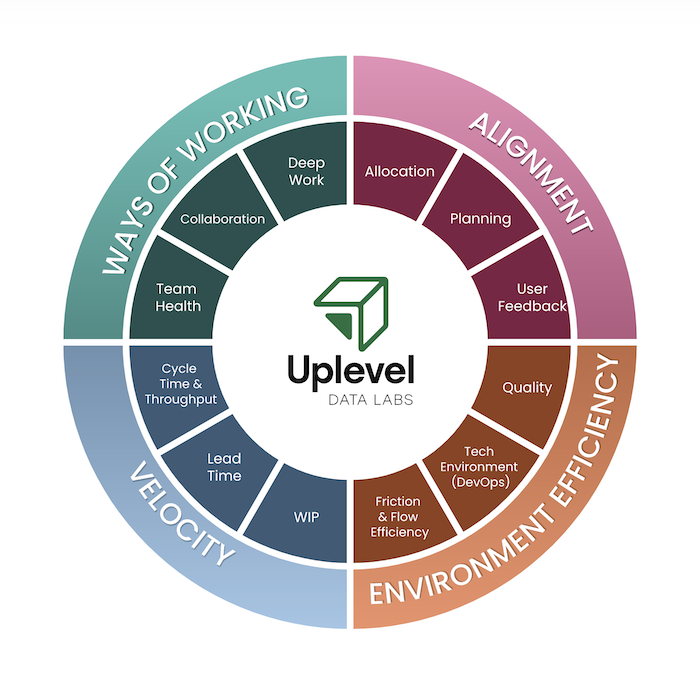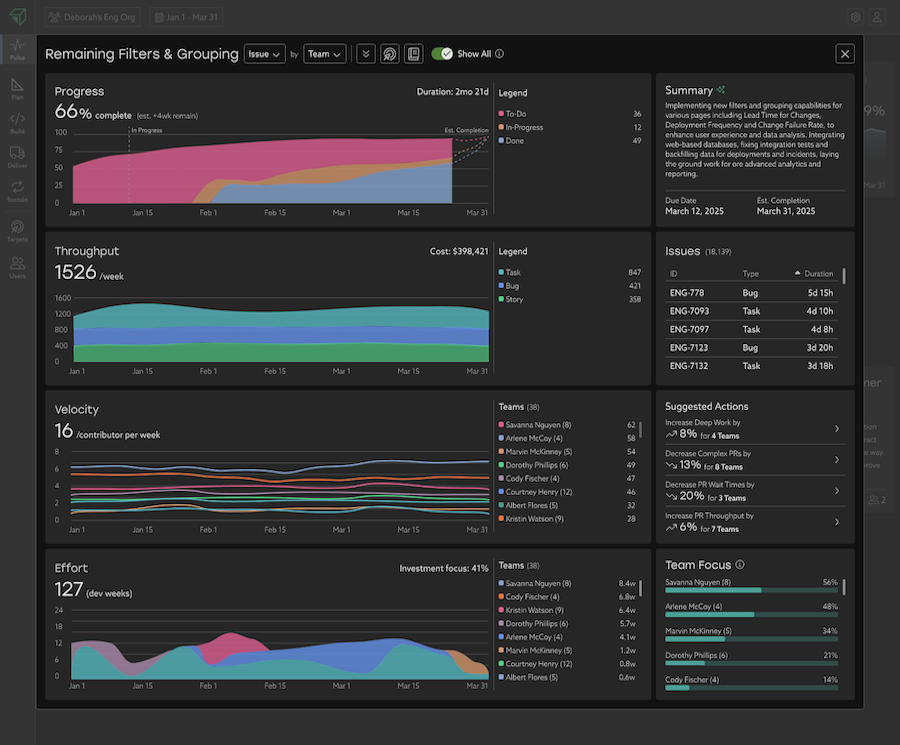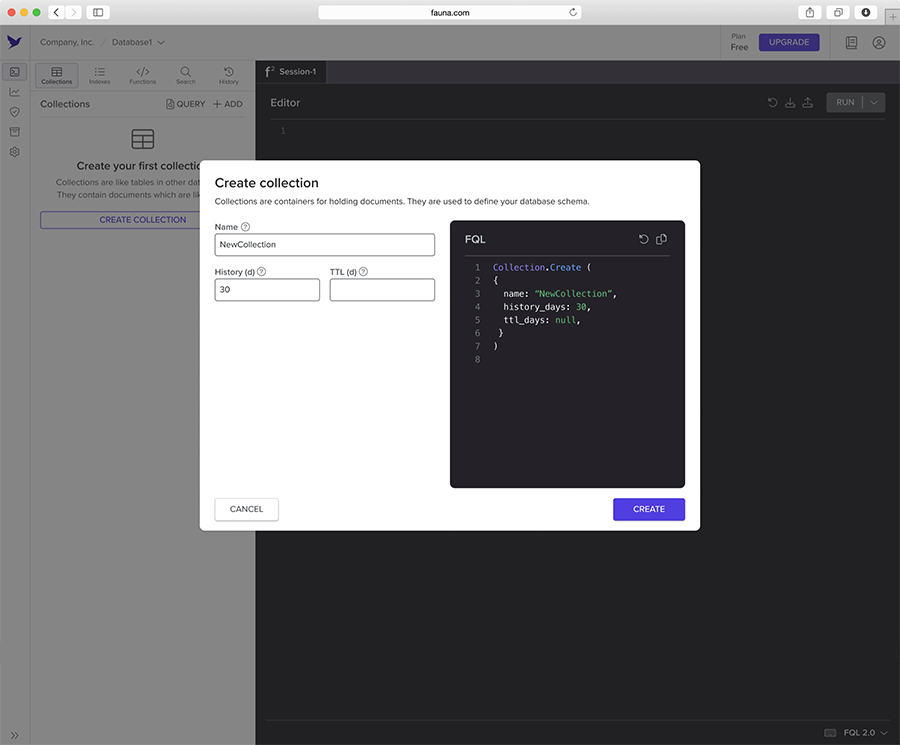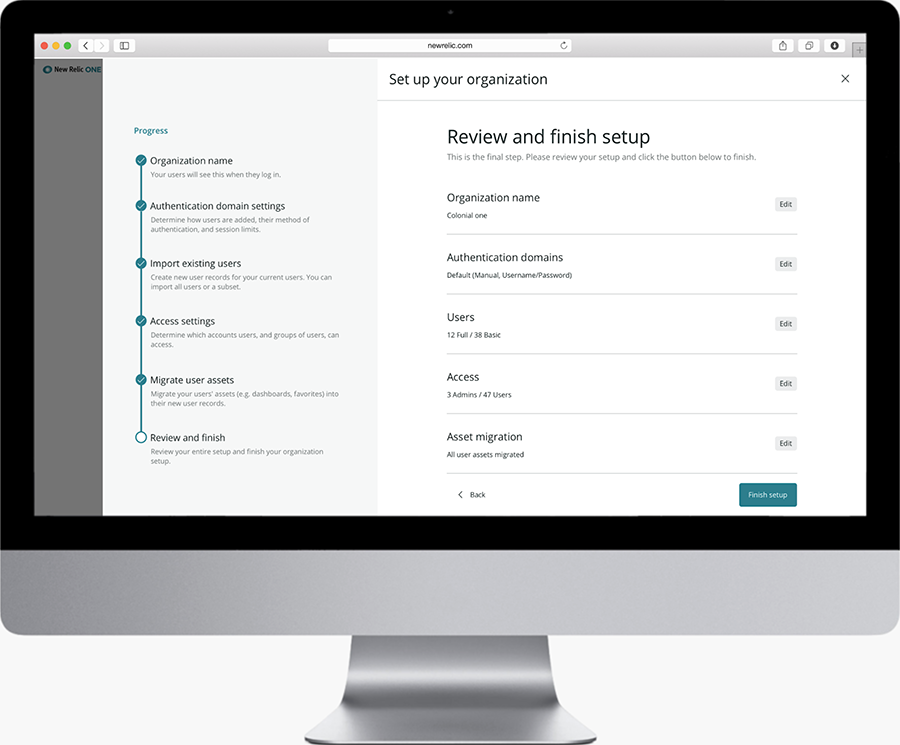Analytics Platform | 2025
Uplevel
I led an end-to-end product redesign, the challenge was transforming surface-level metrics into actionable insights through intuitive data visualization and AI-driven reporting. This drove a 50% increase in engagement from our key persona, and resulted in productivity gains on the measure of 20x for their key delivery metrics.
